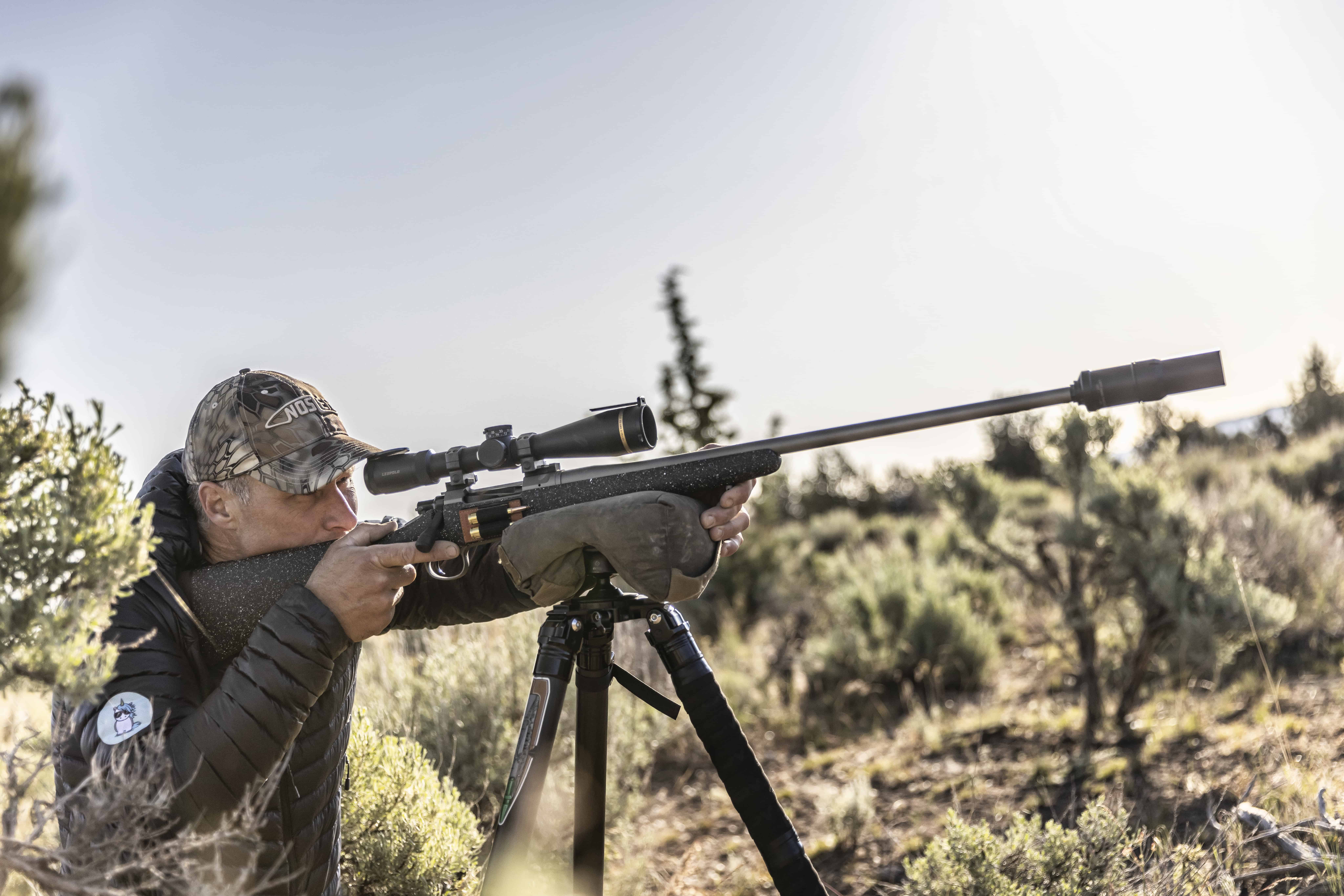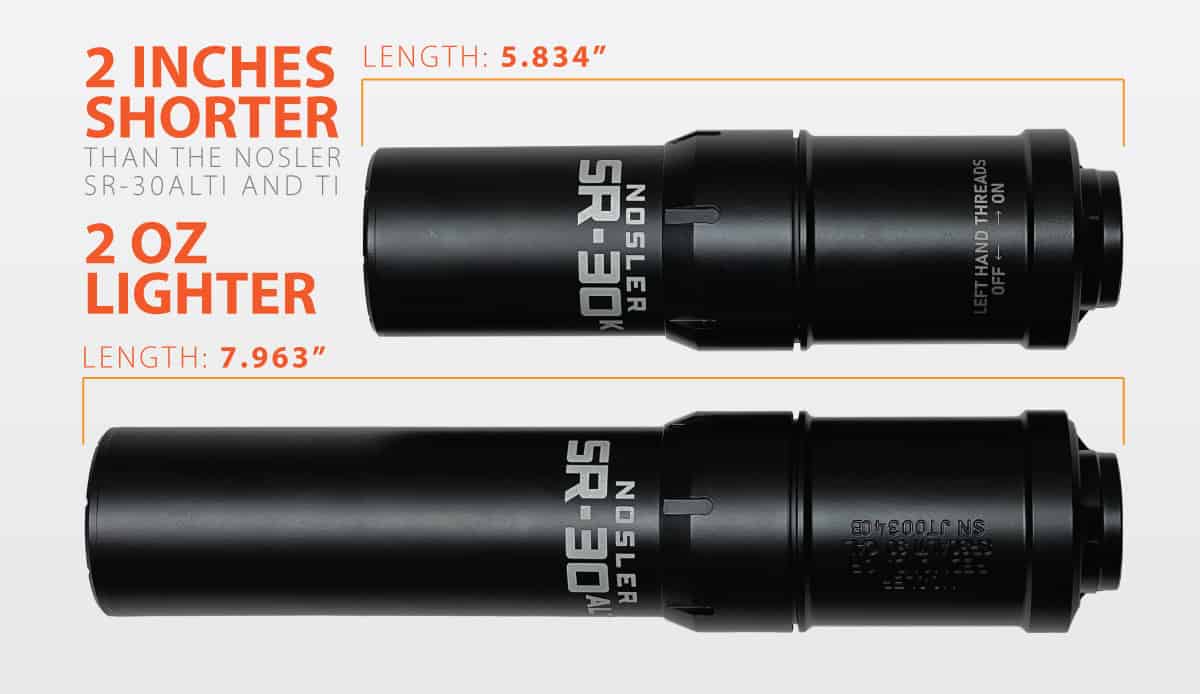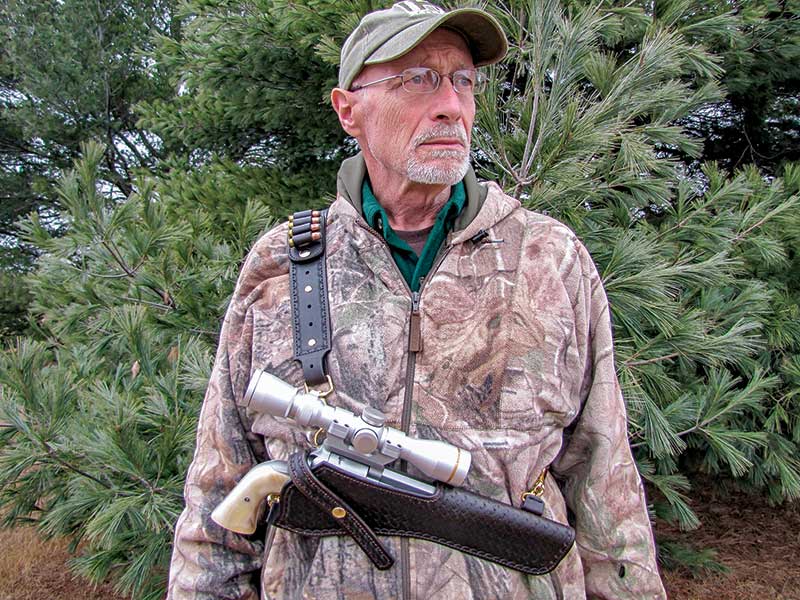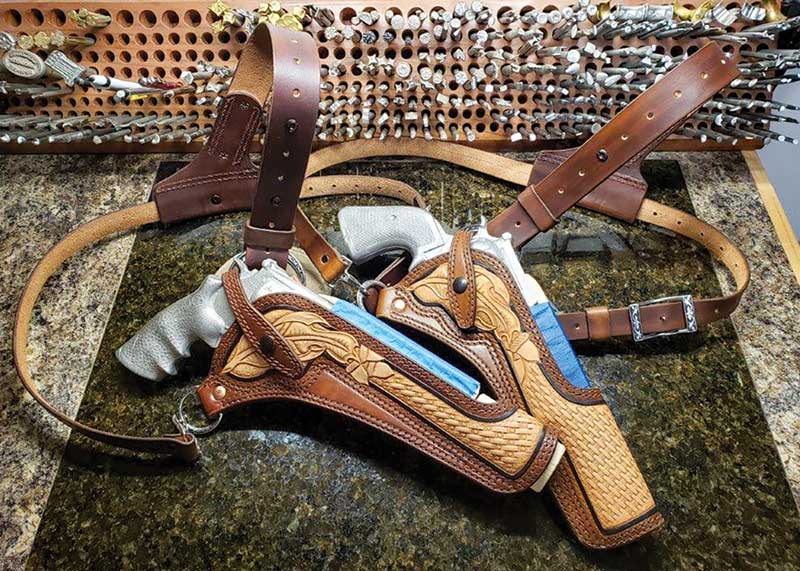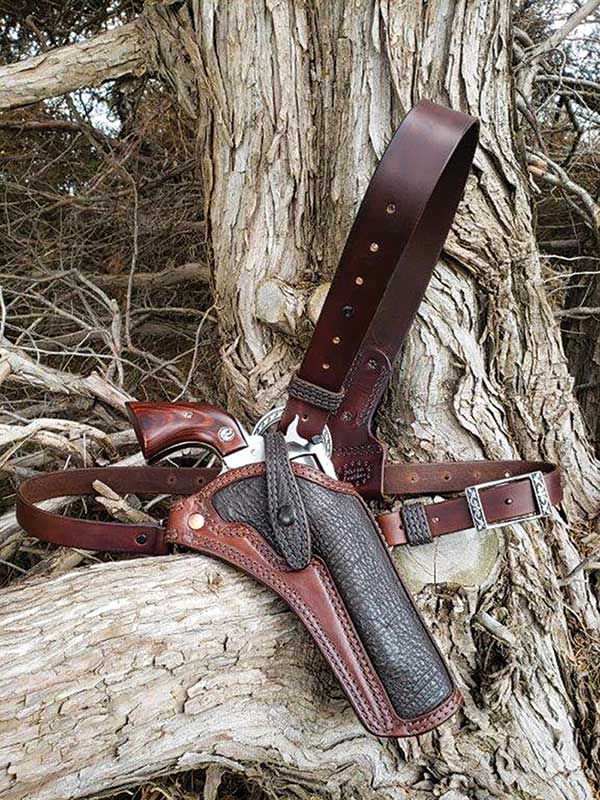I put one on a 30-06 of mine and went to the range to zero it in. After a couple of round later, a few REALLY pissed off folks told me to leave. So learn from my mistakes okay? Grumpy
Category: Gear & Stuff
The all-new Nosler SR-30K — more popularly referred to as a K-Can — was designed with hunters in mind. The K-Can, derived from the German word “Kurtz,” meaning “short,” is two inches shorter and two ounces lighter than the SR-30AlTi employing a proprietary baffle stack design for maximum performance in a minimalist package.
At less than 6 inches in overall length and 7.2 ounces in weight, the K-Can is easier to maneuver than a full-size suppressor making it ideal in a treestand, blind or on longer rifles. The lightweight, diminutive footprint provides superior handling characteristics and offhand balance.
The K-Can (MSRP $729) incorporates the same attachment system as the rest of the Nosler suppressor line and can be mounted either over a brake or direct-threaded to the muzzle with the use of the included adaptor.
SPECS
• Weight: 7.2 ounces
• Length: 5.834 inches
• Diameter: 1.740 inches
• Color: Black
• Thread Pitch: 5/8×24
For more information about Nosler suppressors, including the new K-Can, visit Nosler.com.
If you have a rifle or two you’d like to equip with a telescopic sight, but can’t justify several hundred dollars for most of the offerings currently out there, Primary Arms has a good deal at the moment. It’s for their Classic Series 3-9×44 Rifle Scope, currently priced at just $94.99.

It has a 30mm scope tube, which transmits more light, more efficiently than the typical 1-inch tube used on most lower-cost commercial scopes. That means using 30mm. mounts and/or rings, of course, which are a bit more expensive, but not too much so. You’ll have the opportunity to buy discounted scope covers and mounts if purchased with the sight, which is useful. It uses a standard duplex reticle, with no bullet drop compensation or range-finding ability, but for its target market that’s probably not a problem. I intend it for use at up to 300 yards, and out to that range I can compensate for bullet drop and windage by eye. Any competent rifleman should be able to do so, if he knows his firearm and ammunition.
I’ve been trying one out, and I’m pretty impressed by it. It works just fine for cartridges from rimfire to .308 Winchester, and I presume it’ll probably suffice for more powerful ones too, despite their heavier recoil.
At its price point it’s probably unbeatable value right now. I own several Nikon ProStaff scopes, which were (sadly) discontinued a few years ago, and always found them to be very good value for money.
Well, this Primary Arms scope is at least as good as them in terms of optics, gathers more light, and costs a lot less than they did. I don’t know how Primary Arms managed to hold this price point, but I’m not complaining! I just bought a couple more to put on rifles that don’t yet have scopes, because with my eyes getting as old as the rest of my body, iron sights are really not an option for me any more.
(No, Primary Arms isn’t compensating me in any way to boost their products – they don’t even know I’m writing this article. I just like what I bought, and I like to tell my readers and friends about good deals when I find them.)
Recommended.
Peter
Mainstream leather companies provide a wide selection of products, from holsters to slings, cartridge carriers and more. There are occasions when the customer is looking for something a little different, perhaps more custom or filling a void the big tents do not cover. I have been searching for holsters designed to carry large, scoped, hunting handguns on my chest for easy accessibility. Since I couldn’t find exactly what I was searching for, I reached out to some boutique shops.
Nixon Leather
When a new custom shop BFR revolver arrived, I knew it would be challenging to find a suitable holster. The BFR was chambered in .460 S&W Mag with a 10″ barrel plus muzzle brake, making the overall barrel length around 12″. When scoped, it’s a heavy gun, to say the least. I contacted Lance Nixon of Nixon Leather to design a chest holster to carry this beast.
Lance subscribes to the concept — the primary purpose of a holster is function and comfort. Lance utilizes hide from Thoroughbred Leather in Tennessee. He incorporates 7- to 8-oz. vegetable-tanned leather for the main body and adds another layer of 3- to 4-oz. tanned leather when lining projects warrant. All the patterns used are created individually by hand in Lance’s workshop. One feature I appreciate is the double stitching that makes Lance’s work recognizable. His preference for hardware like rings and snaps is stainless steel. It’s gorilla-proof.
Nixon Leather also does some eye-pleasing exotic inlay. He doesn’t do an overlay but rather a raised inlay, which helps prevent raised edges on the holster that may snag, leaving a cleaner appearance. Nixon Leather chest rig straps receive a beeswax-based leather conditioner, allowing them to flex and better fit the shooter. Lance informed me there is a common misconception that leather is soft. His quality leather holsters are formed and put through a sealing process and should not be oiled. He offers a variety of options in color and stamping for a one-of-a-kind custom look.
Lance has an inventory of 230 or so mold guns. While he specializes in revolvers, if he can get his hands on a mold, he can make a holster to accommodate. I carried the hefty BFR in Lance’s chest rig for 10 days while hunting in Africa and was pleasantly surprised by how comfortably the holster managed the weight of this revolver. Lance can be reached through his Facebook business page — Nixon Leather.
Back Country Leather
Another hide-stretcher who has recently launched into the leather business is Randy Miller of Back Country Leather. Randy is a serious handgun hunter and knows what hunters are looking for. His dad started him out on a leathercraft kit from Tandy. Their first project was a wallet and Randy’s work has evolved into making first-rate holsters for the most discerning hunters.
Back Country Leather specializes in custom holsters with function and longevity in mind and all are made for specific customer requests. When you consider the number of variables, such as a wide selection of make/model of firearms, different optics, strong side, cross-draw, bandolier, chest rig, color, thumb break or safety strap, tooling preferences, and the list goes on, you can see a variety of specific needs for a custom rig. Randy can make your solution a reality.
Randy employs Tandy Leather for most of his holsters. He starts with 9- to 10-oz. vegetable tan leather with quality hardware when building his handgun hunting holsters. The type of leather and thickness may change depending on the specific firearm and application. Randy’s hands craft every item leaving the shop. He also integrates industrial-grade stitching machines and will use whatever hardware it takes to produce the most durable item possible. Randy has spent much time in the field testing his products to see if they are comfortable and safe.
Recently I received a beautiful chest holster from Back Country Leather designed specifically for a scoped, 10″ Freedom Arms Model 83. If all goes well, I’ll be wandering around South America in a few months wearing this rig. Randy can be reached at backcountryleather@att.net or on his Facebook page at Back Country Leather Goods.
These smaller boutique shops fill a void in the holster market. Whether you’re packing a 4″, iron-sighted revolver for hiking around the hills or carrying a dedicated, scoped, long-barrel model, these hide-stretchers have the bases covered. When nylon or Kydex doesn’t cut the mustard, there’s something special and unique about a quality, well-made leather holster — especially when crafted in America by hard-working Americans!
